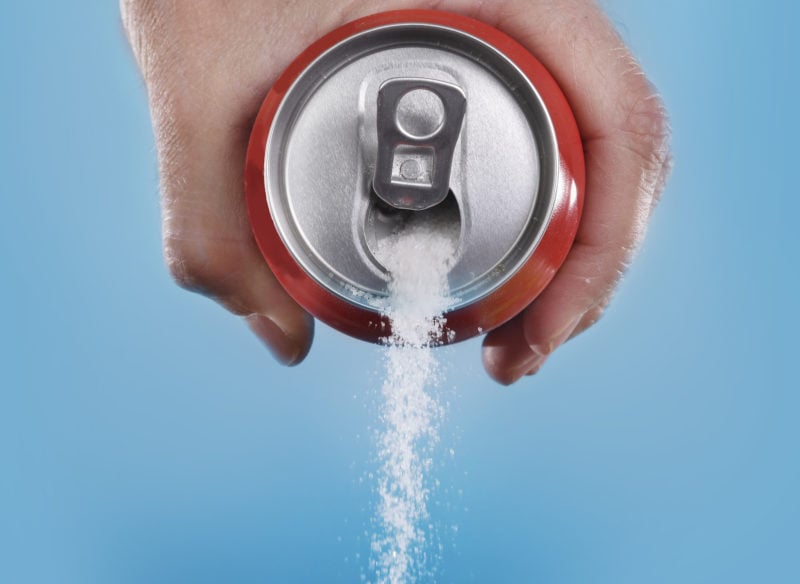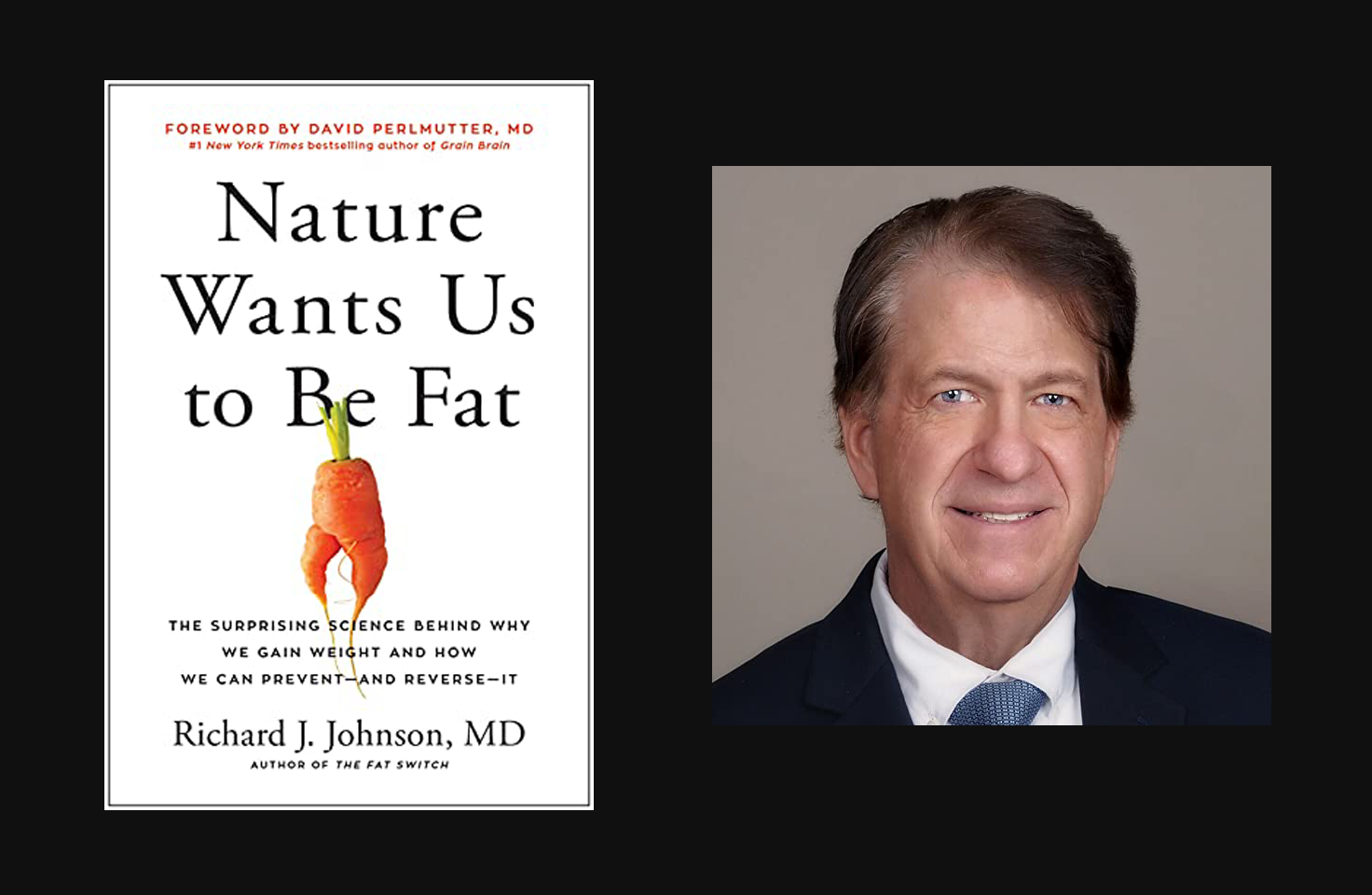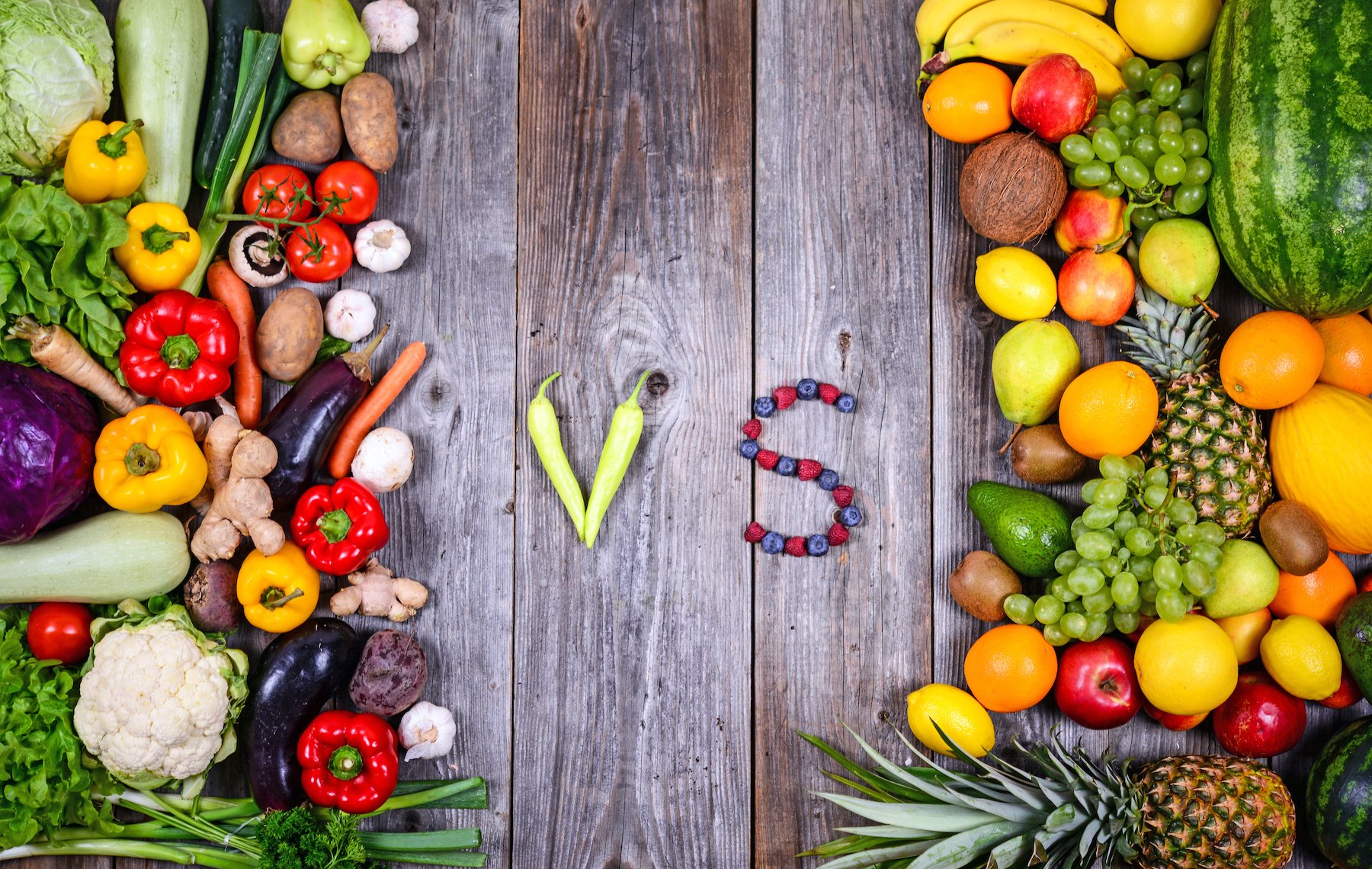Fructose is a simple sugar that occurs naturally in ripe fruits, sweeteners and natural sugars like honey, palm sugar, maple sugar, and agave syrup, and in small quantities in some vegetables like asparagus, onions, and peppers. When combined with glucose, it’s used to manufacture table sugar (sucrose). But today, it’s primarily known in the context of high-fructose corn syrup (HFCS), a sweetener added to many processed foods, such as sodas, candies, and frozen meals.
“The USDA estimates Americans consumed around 21 pounds of high-fructose corn syrup in 2019.”
Plenty of research shows at least a correlation between increased fructose consumption (primarily as HFCS) and a rise in obesity. In addition, several studies show links between excessive fructose consumption and cardiovascular disease risk, insulin resistance, metabolic syndrome, and increased levels of visceral fat.
Researchers are learning more about the mechanisms by which the sugar may be behind many of these metabolic consequences, including being a potentially significant driver of non-alcoholic fatty liver disease (NAFLD), estimated to be present in 25% of people worldwide and as many as 12% of US children.
Here, we unpack what we know about how fructose impacts the body and why it’s best avoided in your diet, especially as an added sweetener of any kind (including HFCS).
What is Fructose?
Different types of sugar vary in how we digest and metabolize them and how they affect overall health. Like glucose, fructose is a monosaccharide, a simple sugar that your body cannot break down into smaller sugar molecules. The liver is the primary organ in the body that can metabolize fructose in large amounts. If a person consumes more fructose than the liver can handle, the organ gets overloaded, leading to profound health consequences upstream of metabolic dysfunction (more on that below).
To turn fructose into high-fructose corn syrup, manufacturers mill corn into corn starch, extract amylose (chains of glucose), break that down into glucose, and then convert it to fructose. Then they purify the fructose and mix it with glucose to create a final sweetener that can be even sweeter than sucrose but often cheaper and easier for food manufacturers to work with. Most forms of HFCS contain 55 percent fructose and 45 percent glucose.
Before HFCS became widely available over the last several decades, most people only consumed small amounts of fructose in their diet from natural sources. It’s difficult to get accurate statistics about fructose consumption, but given the rise in processed foods with added sugars (including sugar-sweetened drinks), some research suggests as much as 10% of our calories come from fructose. The USDA estimates Americans consumed around 21 pounds of HFCS in 2019. (This is down from a peak of 37 pounds in the late 1990s, but that number was zero in the 1960s.) According to the Centers for Disease Control and Prevention (CDC), between 2011 and 2014, nearly half of adults (and 63% of people 19 and under) in the United States consumed a sugar-sweetened beverage on a given day. Consumption of added sugars among U.S. adults increased more than 30 percent over the past three decades.
The increases of HFCS in the food supply and consumption of added sugar parallels a significant rise in obesity and other chronic diseases like Type 2 diabetes and heart disease, and robust scientific literature has elucidated the cellular mechanisms through which this may happen. As with most topics in nutrition, however, there is still some debate about whether there is a causal link between actual consumption of high-fructose corn syrup and specific health outcomes. Some of the research questioning the relationship between HFCS and metabolic issues stems from organizations notorious for being sponsored by the soda and fast food industry. Overall, there is a lot of research about the negative effects of excess fructose on our biology.
What Fructose Does to the Body
So what’s going on in the body that leads to such different effects from glucose and fructose intake? First, the body metabolizes the two types of sugars very differently. Glucose is absorbed in the small intestine into the bloodstream, delivered to cells throughout the body. That’s why it raises what we call “blood sugar.” Glucose prompts the pancreas to release insulin, which helps cells take in glucose to make energy.
Fructose, by contrast, is metabolized mainly in the liver (and depending on the amount, by the cells in the intestine), and, unlike glucose, it does not trigger the release of insulin. For this reason, fructose won’t have an immediate effect of raising blood sugar levels, and foods higher in fructose tend to have a lower glycemic index than starch-based foods.
Most people’s bodies can process a small amount of fructose, like what you’d get from one or two pieces of whole fruit. But excessive consumption of fructose can cause several problems.
Fructose is metabolized by an enzyme called fructokinase, and that process uses ATP, the energy currency of your cells. Processing too much fructose too quickly can cause a depletion of ATP, which can contribute to oxidative stress (meaning that the cells have too many “reactive” molecules in them, which can be damaging), inflammation, and mitochondrial dysfunction.
Additionally, in the presence of too much fructose, the liver can start turning the sugar into fat—a process known as de novo lipogenesis (DNL). At the same time, fructose metabolism can reduce the oxidation of fatty acids. This leads to a buildup of fat in the liver, and is why the sugar is thought to be a primary driver of nonalcoholic fatty liver disease (NAFLD), an umbrella term for liver conditions not triggered by excessive alcohol. NAFLD is a major cause of liver disease globally. Excess fructose also leads to the production of byproducts that can be problematic to the body in high concentrations, including uric acid, triglycerides, lactate, methylglyoxal. It can even be converted to glucose.
All of these effects of metabolizing excessive fructose contributes to several downstream effects:
Insulin Resistance in the Liver
Hepatic (liver-based) insulin resistance is a crucial feature of nonalcoholic fatty liver disease and leads to Type 2 diabetes. Even though fructose doesn’t act on insulin directly, many interactions caused by fructose metabolism can spur insulin resistance, including strongly promoting the build-up of fat in the liver and reducing fatty acid oxidation in the mitochondria, and the mitochondrial oxidative stress mentioned above.
For example, one potential driver of hepatic insulin resistance is that DNL can increase levels of diacylglycerol (DAG, formed when two fatty acids are bound together with glycerol), which is known to activate PKCε, an enzyme associated with lipid-induced insulin resistance.
These effects are considered indirect, but there’s also evidence in animal models that fructose may directly cause hepatic insulin resistance by interfering with insulin signaling.
Although these physiological mechanisms have been shown in multiple studies, some researchers question whether the effects are significant at typical fructose consumption levels.
To test this, researchers from the University of Zurich conducted a study of 94 healthy young men to determine the effects of moderate amounts of fructose. Participants were randomly assigned to consume a drink sweetened with fructose, glucose, or sucrose every day for seven weeks or to a control group, which did not drink sugar-sweetened beverages. The sugar in the drinks amounted to 80 grams per day, equivalent to about 0.8 liters of a regular soft drink. The study, published in March 2021 in the Journal of Hepatology, found that fat production in the liver was nearly twice as high in the fructose and sucrose groups as it was in the glucose group.
Uric Acid Buildup
Fructose metabolism also generates increased levels of uric acid, a metabolic byproduct found inside cells and in the blood. Studies show hyperuricemia, or an excessive amount of uric acid in the blood, is not only associated with NAFLD and hepatic insulin resistance but may be one of the mediating forces. The mechanism is thought to be that uric acid causes mitochondrial oxidative stress, contributing to DNL and hepatic fat accumulation. Animal studies showed that lowering uric acid reduced fatty liver.
Another study showed that increases in uric acid created in fructose metabolism may stimulate the liver to generate more fructose, worsening the effects on fat accumulation. The research suggests that uric acid stimulates an enzyme called aldose reductase that’s involved in the conversion of glucose to fructose.
Hyperuricemia also increases the risk of insulin resistance and Type 2 diabetes through additional mechanisms outside of NAFLD, and nitric oxide levels may play a role. Nitric oxide enables proper endothelial function required for glucose uptake, and uric acid decreases these levels.
Leptin Resistance
Other researchers are looking at how fructose affects hormones that regulate our hunger and satiety cues. Laboratory studies in rats have found high levels of fructose induces resistance to leptin, the hormone that sends signals to the brain that the body is full. Leptin resistance is associated with weight gain and obesity when combined with a diet high in calories and fat. Fructose-fed rats also had higher levels of triglycerides, a type of fat, in the blood. The researchers hypothesize that elevated triglycerides prevent leptin from reaching the brain and therefore prohibit signaling that the body is full, a finding backed up by other research.
Inflammation
Fructose has also been linked to inflammation in multiple ways. A study published in 2021 in Nature Communications looked at the effects of fructose on mice and human immune cells. Researchers found fructose changes cellular metabolic pathways to promote inflammation, which can damage cells and tissue and may affect the immune system’s ability to fight off certain infections.
A study in 2020 in mice looked at what happens when fructose metabolism reduces the proteins that maintain the gut barrier, a mucus-covered layer of cells that keeps toxins from leaking out of our intestines. This weakened gut barrier leads to the leaking of endotoxins, which causes inflammation, including in the liver. This triggers a process that contributes to the accumulation of fat in the liver that drives NAFLD.
Microbiome Changes
Excess fructose may alter the gut microbiome in other harmful ways as well. One small 2020 study compared the microbiomes of women sequentially eating a low-fructose diet, a diet high in fruit, and a diet with high-fructose corn syrup. This allowed them to compare outcomes of the diets in the same subject (since gut microbiomes can vary between people). They found the HFCS diet decreased levels of healthy bacteria, whereas eating the same amount of fructose through fruit led to more positive changes, likely because of the fiber content in fruits and vegetables.
So What Should You Do?
- Avoid added sugar of any kind in your food. Whether the sweetener is plain old sucrose (glucose and fructose) or high-fructose corn syrup, you’ll still be taking in excess fructose your liver has to deal with.
- Limit fructose intake to whole fruit, which is unrefined and has fiber to help slow fructose absorption. Fruit also has glucose in it, so it still may cause a blood sugar elevation. Remember, straight fructose won’t spike your blood sugar, but it can still cause damage in several ways.
- Avoid drinking fructose. The rate at which you consume fructose matters; taking it in too fast—as when you chug a fruit juice or sports drink—can overwhelm your liver’s cellular machinery and make the effects more damaging by rapidly depleting ATP. Refined and concentrated forms of fructose like what is found in juice or soda are not good for health and should be avoided.
Dive Deeper
Here are two of our favorite reviews on fructose, how it’s metabolized, and what it does to the body.








